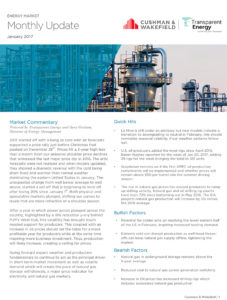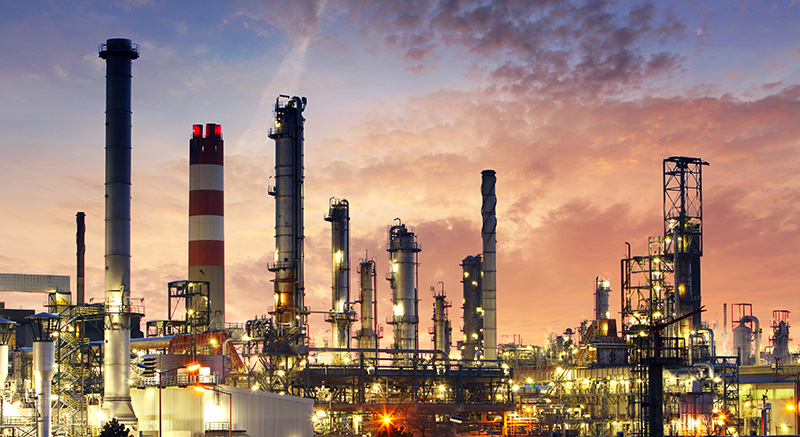Cushman & Wakefield and Premier Energy Auctions have released their Monthly Energy Market Update for January 2017, a snapshot of economic, geopolitical and meteorological factors affecting the energy market.
2017 started off strong as cold artic air forecasts caused a price rally just before Christmas that peaked on Dec. 28. Prices saw a two-year high less than a month from seasonal shoulder prices declines that resulted in the last big price fall of 2016. These forecasts were not realized and shower a dramatic reversal due to short-lived cold temperatures and uncharacteristically warm weather across the east side of the U.S. this month.
This caused a selloff that is starting to slow down after losing 20 percent since the start of the year. Physical and speculative markets dramatically fell, leveling curves to what is more typical of a shoulder season.
After falling prices across the US in 2016 and a 19 percent reduction in Y-O-Y after PJM’s West HUM, much-needed support for producers has crept up. This along with a jump in oil prices should result in a strong year for producers and inspire higher levels of business investment. Production should increases, creating a ceiling for prices.
Weather and production fundaments will still serve as the main driver in short-term market movement and volatile demand, which will create the pace of natural gas storage withdrawals, a huge indicator for electricity and natural gas markets.
- La Nina continues to be under advisory but new models show a transition to downgrading to neutral in the next month. This should result in a normalized seasonal volatility but only if the weather patterns follow suit.
- According to Baker Hughes, U.S. oil producers added the most rigs since April 2013 during the week of Jan. 20, 2017. Adding 29 rigs, resulting in a total of 551.
- People continue to be skeptical over whether or not the first OPEC oil production curtailments will be implemented and whether prices will remain higher than $50 per barrel approaching summer.
- Because of higher natural gas prices, producers have driven up drilling activity. Natural gas and oil drilling rig counts have risen 72 percent since bottoming out in May 2016. The EIA estimates that natural gas production will raise 2 percent compared to the 2016 average.
- Potential for colder arctic air reaching the lower eastern half of the country in February, resulting in higher heating demand.
- Extreme cold can hurt production as well-head freeze-offs keep natural gas supply offline, tightening the market.

- Natural gas in underground storage remains above the five-year average.
- Reduced coal to natural gas power generation switching.
- Heightened oil prices have improved drilling rigs, which include associated natural gas production.
Gary Graham, director of energy management, can take you through the report and your options.
Read the full January Energy Update for a more throughout description of last month’s news.






